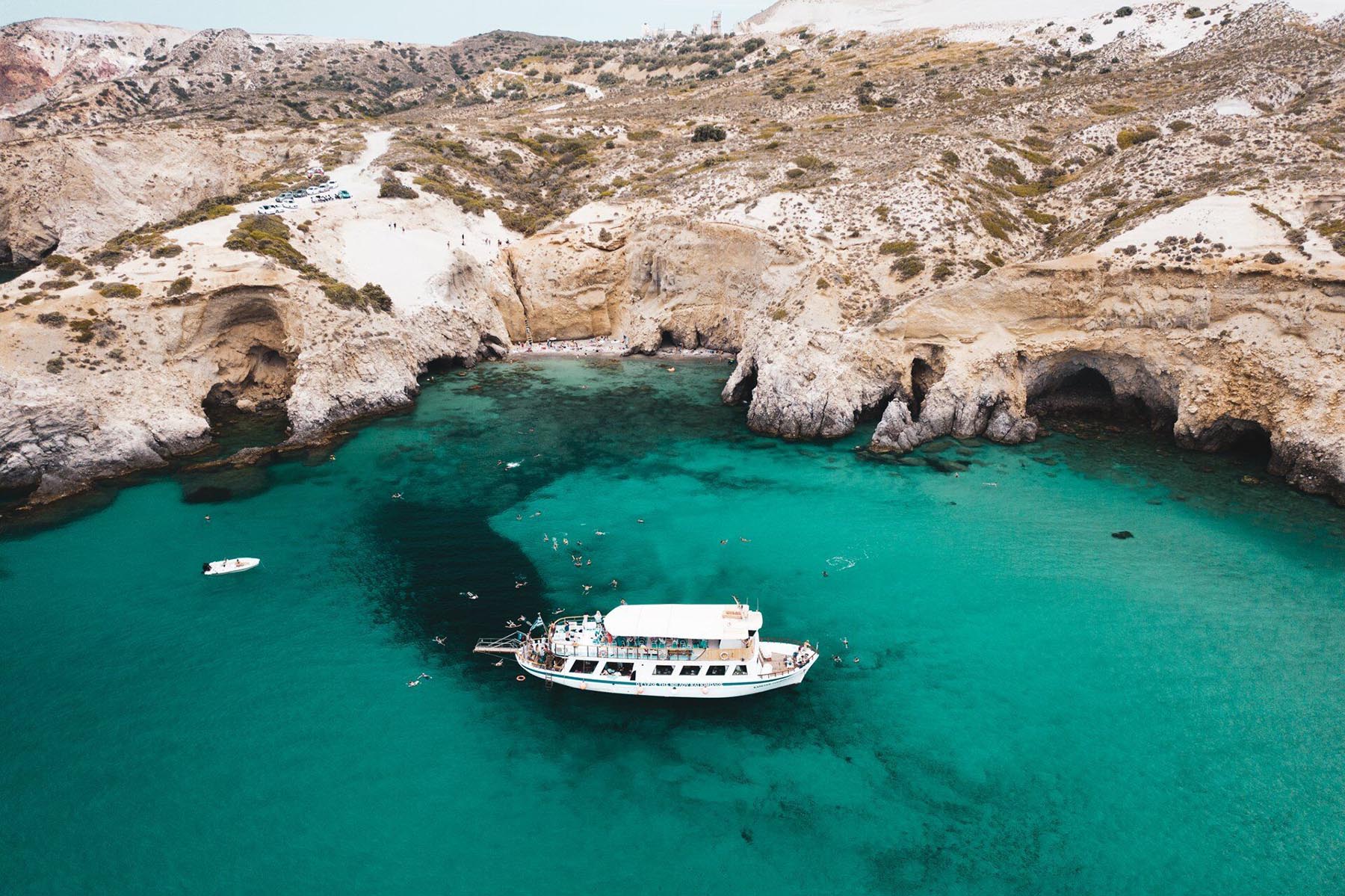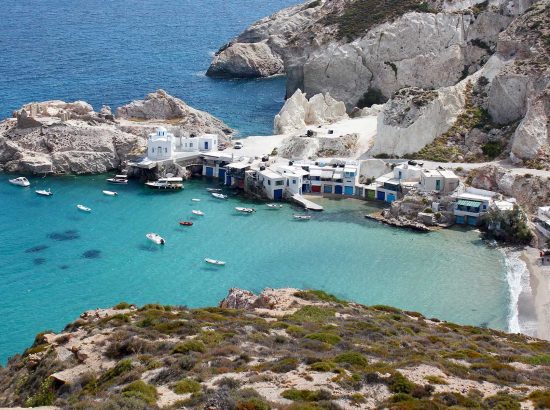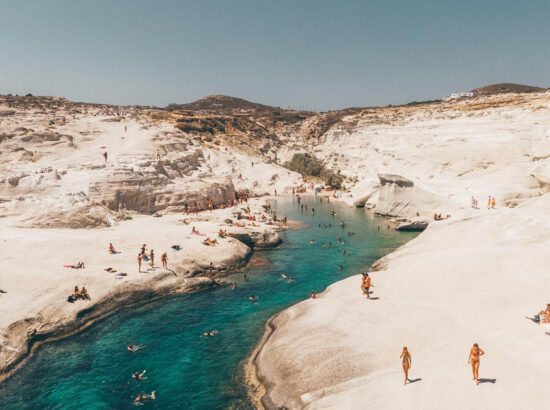A boat trip to the natural escape of Polyegos
Discover the largest uninhabited island in the Aegean: Not just a virgin landscape of pristine beaches, but an escape for rare and protected wildlife, just off Milos.
Your instinct, as you complete the short crossing from Milos, will be to head straight to one of Polyegos’ pristine beaches. And who could blame you? Especially after being greeted by the beautiful blue-green sea and remote bays?
But the beaches are only the start of what Polyegos has to offer. The largest uninhabited island in the Aegean is also a habitat for rare species of plants and animals, for which it has been made part of the Natura 2000 network of protected biotopes.
Reptiles, migratory birds (including the Eleonora Falcon) and wild goats (Polyegos means “many goats”) are common. Less visible are the increasingly rare Mediterranean Monk Seals that dwell in the sea caves along the craggy shoreline.
So as well as sunbathing, put on a pair of trainers and get exploring. You’ll find Polyegos wasn’t always uninhabited.
Source: discovergreece.com
Related Posts
What to do on Milos
Kopania: Barley bread rolls filled with raisins “Koufeto” (sugarplum): Boiled honey with roasted almonds. It is usually served in weddings and shop opening ceremonies.
Hidden gems of Milos island
Red and black rocks create a wild landscape around the crater on Nea Kameni, a small island at the centre of the caldera. From the top of a volcano with a 2.5 million-year history, you have an incredible view of the caldera. The myth that Santorini is the ancient city of Atlantis, which submerged over 9,500 years ago, comes to life before your eyes.





